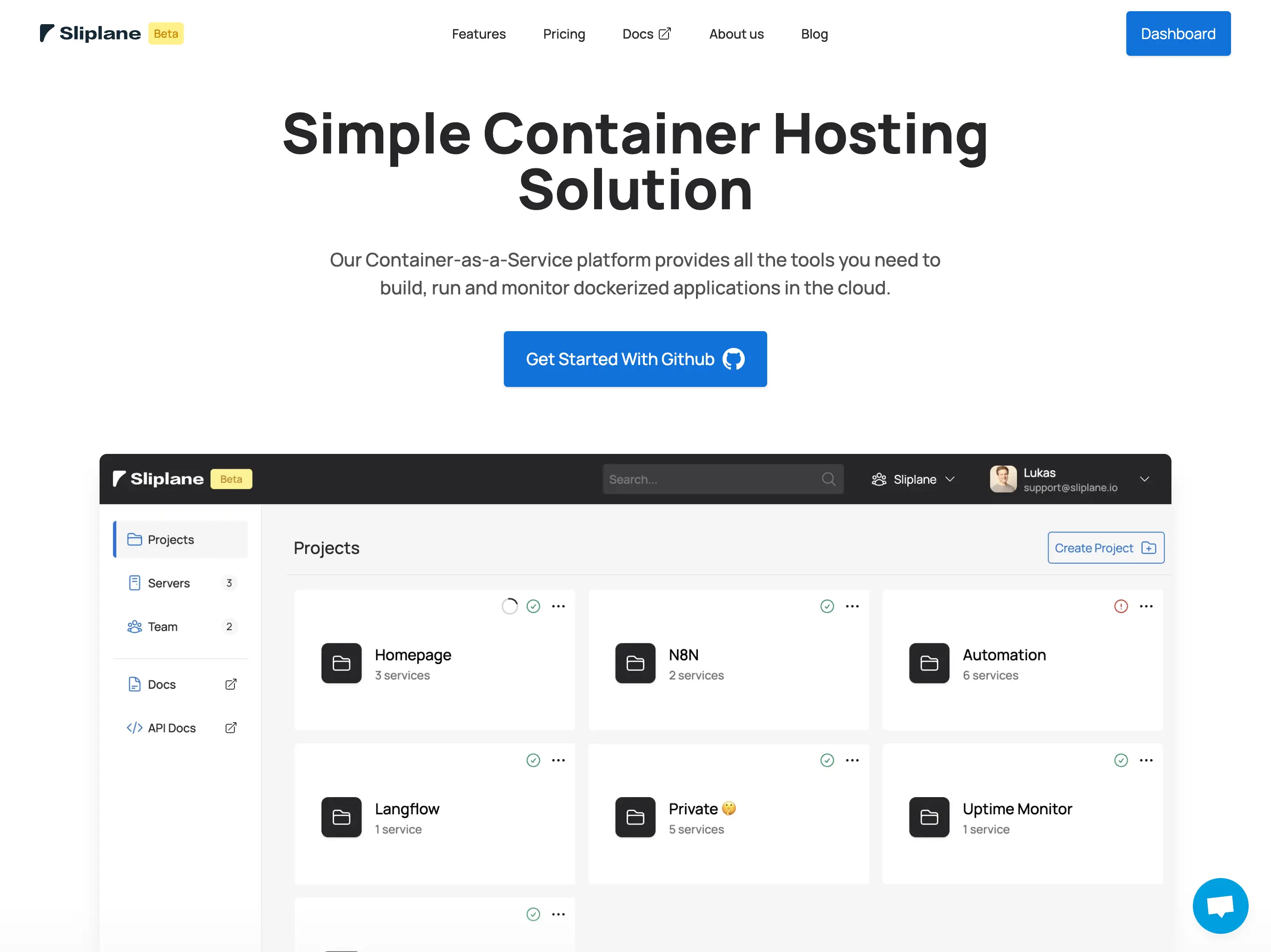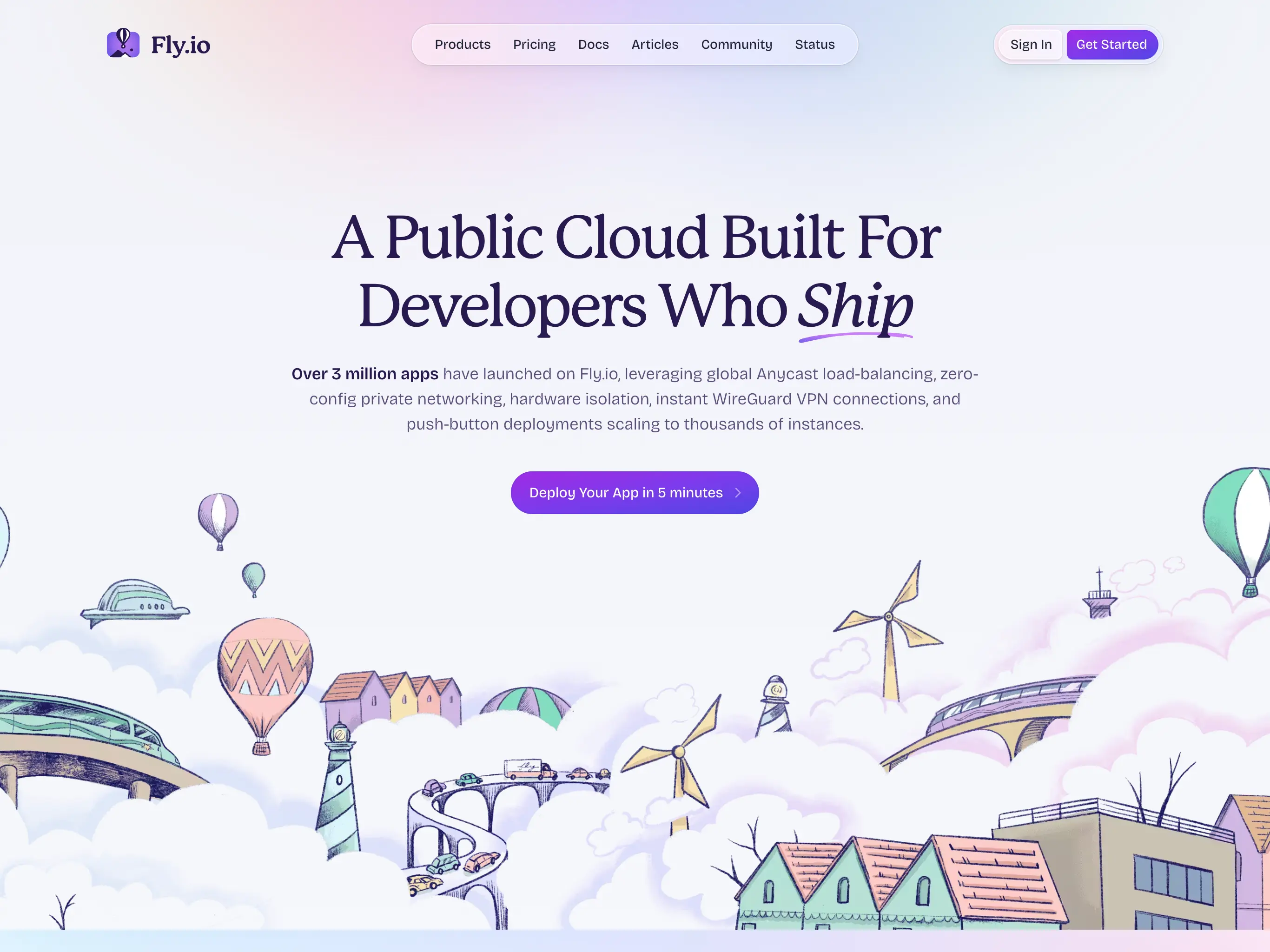
5 Awesome Azure Container Apps Alternatives
 Lukas Mauser
Lukas MauserAzure Container Apps is Microsoft's serverless container offering. And while serverless sounds great in theory, Azure's long cold starts can be a deal breaker.
If you're looking for alternatives that either have faster cold starts or avoid them altogether, here are five platforms worth considering:
| Platform | Pricing Model | Scale to Zero | Best For | Setup Complexity |
|---|---|---|---|---|
| Sliplane | Pay-per-server | No | Cost-effective hosting, multiple services | Low |
| Google Cloud Run | Pay-per-use | Yes | Serverless containers, Google ecosystem | Medium |
| AWS App Runner | Pay-per-use | Yes | Serverless containers, AWS ecosystem | Medium |
| Digital Ocean App Platform | Pay-per-app | No | Small teams, simple projects | Low |
| Fly.io | Pay-per-use | No | Global distribution, edge computing | Medium |
1. Sliplane

Sliplane is a European PaaS provider that focuses on containers. It allows you to quickly deploy Docker Images from registries like Docker Hub or GitHub Container Registry or build and deploy your own code directly from a GitHub repository.
One big difference: Sliplane is not serverless. In fact it embraces servers, because they have some unique...
...benefits compared to serverless offerings:
- low and predictable pricing, which is great for POCs, prototypes, internal tools or smaller apps
- the ability to run long-running apps with long-lasting connections
- the use of persistent volumes is possible for applications that need to store data
- pay per server model: only pay for the server and deploy multiple services on it without paying extra for each service
The downsides are:
- limited control - you don't get the full flexibility of Azure, but instead sensible defaults that make deploying containers easy.
- limited scalability - Sliplane can potentially handle high traffic and even grow to millions of users with you, but when your app grows beyond that, you might actually need Azure.
- There is no scaling to zero - Sliplane requires you to keep resources provisioned, although because of the lower prices, it oftentimes still comes out cheaper than Azure Container Apps, especially if you use the ability to run multiple services on a single server.
Overall, if you're looking for a European alternative and don't need to handle millions of concurrent users, or you want to avoid retrofitting an app into serverless concepts, Sliplane is a great alternative to Azure Container Apps.
2. Google Cloud Run

Google Cloud Run is Google's serverless container offering. It has a lot of similarities to Azure Container Apps, and just looking at Big Cloud, it's probably one of the fiercest competitors.
Both platforms are serverless, but if you are looking to switch from Azure Container Apps to another platform, Google's Cloud Run has some...
...advantages over Azure Container Apps:
- more responsive autoscaler
- faster cold starts
- instance based pricing for long running apps
- integrates into googles ecosystem - this means lockin but also benefits if you are already using other google cloud services
Downsides:
- less control, simpler to setup but if you need advanced configuration, you might hit limitations
- cold starts - true scale to 0 means cold starts, although they are faster than Azure Container Apps
Overall differences are nuanced. Google Cloud Run's autoscaler is generally considered more responsive and cold starts are generally faster compared to Azure Container Apps. If this was the main decision driver and you need to choose between the two, Google Cloud Run would probably be the better choice. Pricing is pretty similar, although Google offers instance-based pricing for long-running apps, which can be a bit cheaper in some scenarios.
3. AWS App Runner

If we mention Google, we also need to mention AWS. The three (AWS, Google and Microsoft) are generally the main players in the cloud space and if you are looking for an alternative to Azure Container Apps, you should definitely at least give AWS App Runner a second look.
In my experience the big 3 try everything to keep up with each other, but one thing is clear: AWS is by far the most complex to setup and use. Azure's DX is much easier to get started compared to AWS, and overall a similar experience to Google Cloud.
AWS App Runner does have one advantage or disadvantage if you like: it keeps an idle instance warmed up, which can further decrease cold start times, but it also means you're paying for that instance even when it's not in use.
From my experience the decision between Google Cloud Run, Azure Container Apps and AWS is often made based on either enterprise sales or the experience of the team with one of the cloud providers. If you don't have any of that pressure from above or within the team and you don't require massive scale, I'd probably go with a simpler solution altogether.
4. Digital Ocean App Platform

Digital Ocean can be considered a simple cloud provider. They offer a much smaller ecosystem of services, but their offerings are generally easy to use and straightforward - much more suitable for smaller teams and projects.
You can deploy containers on Digital Ocean using their App Platform, which will deploy from a registry or build and deploy from source code.
Benefits:
- cheaper than big cloud, but more expensive than Sliplane
- easy to use
- autoscaling to handle traffic spikes
Downsides:
- less control
- autoscaling is limited and can be less responsive compared to serverless containers
- does not scale to zero
A difference in comparison to Sliplane is that Digital Ocean's App Platform does not focus solely on containers. This means that the transition from local development to deployment is not as seamless as with Sliplane, where everything is container-based. Other than that, Digital Ocean's App Platform is a solid choice if you are looking for a simple alternative to Azure Container Apps.
5. Fly

Fly.io is another interesting alternative to Azure Container Apps. Its main USP: Global deployments of containerized applications. Especially for latency-critical applications, this can be a great choice.
Some more benefits of Fly include:
- easy to use CLI and UI
- global deployments
- simple and fast scaling
- reasonable pricing
Downsides:
- to benefit from global distribution, your app architecture needs to be able to handle that
- no automatic build pipeline, manual deploys from CLI
- in general: lower level abstraction compared to Azure Container Apps, you need to manage more infrastructure level tasks yourself
Overall, Fly.io is a great choice if you are looking for a simple way to deploy globally distributed containerized applications and are fine with managing some infrastructure level tasks yourself.
Summary
Choose Sliplane, if you are looking for a simple, cost-effective and European alternative to Azure Container Apps. The strong focus on containers makes the transition from local development to deployment seamless and the pay-per-server pricing model is great for smaller apps that don't need massive scale.
If you can choose between the big 3 cloud providers, Google Cloud Run is probably the best alternative to Azure Container Apps, closely followed by AWS App Runner. Google Cloud Run offers a simpler developer experience, more responsive autoscaling, and better pricing models for long-running apps compared to Azure Container Apps.
Digital Ocean's App Platform provides a solid middleground between simplicity, pricing and scalability, making it a great choice for smaller teams and projects.
If you are comfortable with managing some infrastructure level tasks yourself, Fly.io is a great choice for globally distributed applications.